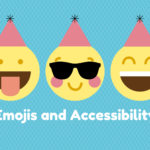
Closed captioning, a crucial element of web accessibility requirements, ensures that individuals with hearing impairments have equal access to audio content. In this article, we will explore the significance of closed captions in meeting web accessibility standards, highlighting their importance in providing an inclusive online experience. Transitioning seamlessly between various platforms and devices, closed captions not only enhance comprehension but also foster an inclusive environment for a diverse range of users.
What are captions?
Captions are a visual representation of the audio in a video. They make videos accessible to the deaf and hard of hearing. Captions provide a text-based and time-synchronized alternative to video content. Besides audio, captions include non-speech elements like speaker IDs and sounds. Moreover these are integral to one’s understanding of a situation in a video.
Closed captioning
Closed captioning is a form of synchronized text that corresponds to an audio track. Furthermore, it allows viewers to read while watching visual content. What is more closed captioning process entails transcribing the audio into text. Additionally, segmenting the text into “caption frames,” and then aligning these frames with the video. Generally, closed captions are displayed at the bottom center of the video when it is being watched.
Am I legally required to provide closed captioning for videos?
If you create or share videos within the United States, naturally your content could fall under federal regulations. These regulations concern accessibility for individuals who are d/Deaf or hard of hearing. As accessibility laws evolve, it is crucial to familiarize yourself with the legal requirements. Besides understand how they pertain to your business. There are four video accessibility laws in the United States that govern video captioning.
U.S. laws that govern closed captioning for online videos
21st Century Communications and Video Accessibility Act of 2008 and 2009
This act requires closed captions for videos on the internet. Furthermore, it applies to web video streaming sites that help to distribute shows on American television. Additionally the captions are available in English or Spanish language.
The Americans with Disabilities Act
While it doesn’t specifically mention online videos, the ADA requires materials made available by public entities must be accessible. This includes state and local governments. The obligation also applies to places of public accommodation.
Section 508 of the Rehabilitation Act of 1973
Section 508 requires captioning and transcription of any video content made public by federal agencies or organizations. As a matter of fact, this includes all agencies receiving federal funds, including higher education institutions.
The Federal Communications Commission (FCC)
The FCC requires broadcast content, broadcast television and faith organizations to have closed captions. Not to mention the FCC has specific captioning standards that organizations must meet. These include caption accuracy, timing, completeness, and placement.
Captions must relay the speaker’s exact words with correct spelling, punctuation, and grammar with 99% accuracy and no paraphrasing. Moreover, they must match the original tone and intent of the speaker and the background noises. Not to mention, captions must not proceed too quickly for the viewer to read.
Captions must be included from the beginning to the end of the program to the fullest extent possible. And must be positioned on the screen without blocking important content. Font size should be reasonably legible.
Closed captioning lawsuits
Hulu settles a lawsuit with the American Council of the Blind (ACB) and Bay State Council of the Blind (BSCB). Further agree to improve the accessibility of Hulu’s streaming service for individuals who are blind or have low vision.
As part of the agreement, Hulu will make its website and software applications compatible with screen readers. And also provide audio description tracks for streaming content whenever possible. This move aligns Hulu with other streaming providers like Netflix, to prioritize accessibility to promote inclusivity in the entertainment industry.
Hulu provides inaccessible videos without closed captioning
Currently, none of Hulu’s streaming content includes audio description, which narrates visual elements for blind and low vision users. Under the settlement, Hulu will start obtaining audio description tracks for a significant portion of its streaming content. The video player will also be updated to allow users to enable or disable this feature, similar to closed captions.
Additionally, users will have the ability to filter the Hulu library based on the availability of audio descriptions. Further providing a more enjoyable experience for the blind community.
Hulu will also update its website and software applications to ensure compatibility with screen readers. Not to mention enable blind users to navigate and interact with the platform. By January 2020, Hulu aims to comply with web accessibility guidelines and conduct usability testing to improve the user experience.
The settlement was facilitated by Disability Rights Advocates (DRA) and Disability Law Center, Inc. (DLC), representing ACB, BSCB, and their respective presidents. The agreement is a significant step toward full inclusion for the blind community. To say nothing of aligning with the goals of the Americans with Disabilities Act.
Conclusion
To tell the truth closed captions play a crucial role in ensuring equal access to information and entertainment. Including for individuals with hearing impairments and disabilities.
That’s why businesses must implement closed captioning and adhere to web accessibility guidelines. This way organizations can foster inclusivity, empower individuals with disabilities, and create a more accessible digital landscape for all.









